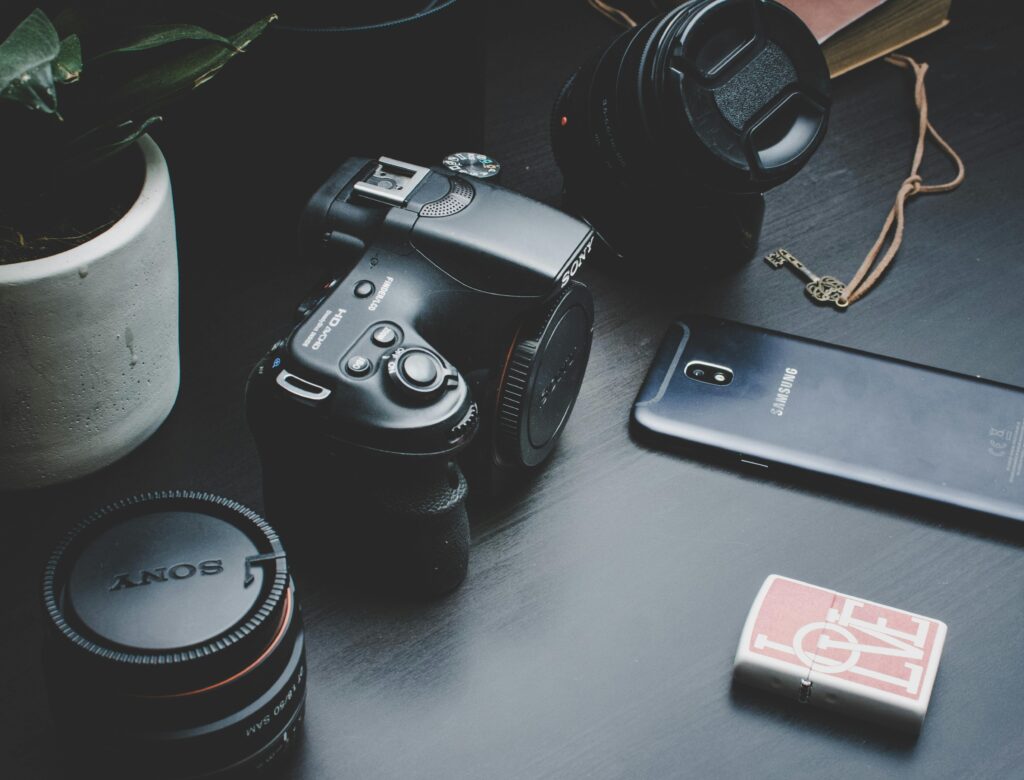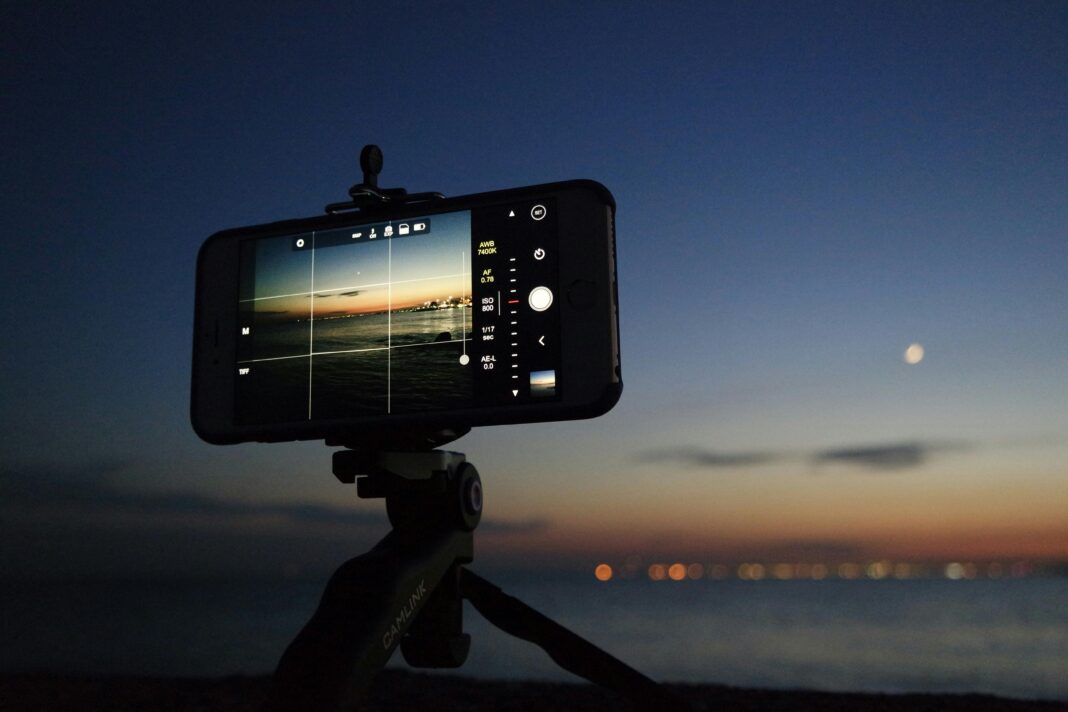Your Smartphone’s Full Photographic Potential
In the world of modern photography, smartphones have become remarkably capable imaging devices. However, even the most advanced smartphone cameras come with inherent limitations due to their fixed lenses and small sensor sizes. This is where external lenses transform the game, offering professional-level versatility that can elevate your mobile photography to new heights.

External lenses serve as powerful accessories that attach directly to your smartphone, effectively overcoming the three major constraints of built-in smartphone cameras:
- Fixed focal length limitations
- Lack of true optical zoom capability
- Inability to capture extreme close-ups or ultra-wide perspectives
Whether you’re:
- A travel enthusiast looking to capture breathtaking landscapes
- A food blogger needing crisp macro shots
- A street photographer wanting more creative framing options
- A social media content creator seeking professional-looking images
- A parent wanting better photos of your children’s activities
…the right external lens can make all the difference in your photographic results.
This comprehensive guide will take you through every aspect of smartphone external lenses, from understanding different lens types to mastering advanced shooting techniques. We’ll cover:
- Detailed analysis of all major lens categories
- In-depth reviews of top-performing models
- Professional selection criteria
- Advanced shooting techniques
- Maintenance and care tips
- Common pitfalls to avoid
- Answers to frequently asked questions
By the end of this guide, you’ll have all the knowledge needed to select the perfect external lenses for your specific needs and use them like a professional photographer.
Understanding Smartphone Camera Limitations and How Lenses Help
The Physics Behind Smartphone Camera Constraints
To truly appreciate what external lenses can do, we must first understand why smartphone cameras have inherent limitations:
Sensor Size Limitations:
Smartphone sensors are dramatically smaller than those in DSLR or mirrorless cameras. While computational photography helps compensate, physics dictates that smaller sensors:
- Gather less light
- Have more noise in low-light situations
- Produce less natural bokeh (background blur)
Fixed Lens Systems:
Unlike interchangeable lens cameras, smartphones have permanent lenses with:
- Limited aperture range
- Fixed focal lengths
- No true optical zoom capability
Digital Zoom Drawbacks:
When you “zoom” on most smartphones, you’re actually just cropping the image digitally, which:
- Reduces resolution
- Increases noise
- Lowers overall image quality
How External Lenses Overcome These Limitations
Quality external lenses provide several key advantages:
Optical Rather Than Digital Zoom:
Telephoto lenses offer true optical magnification without quality loss.
Expanded Field of View:
Wide-angle lenses capture significantly more of a scene than your phone’s native lens.
Specialized Capabilities:
Macro lenses allow extreme close-ups impossible with standard smartphone cameras.
Creative Effects:
Fisheye and anamorphic lenses provide artistic perspectives unavailable otherwise.
Improved Low-Light Performance:
Some external lenses have wider apertures that help in dim conditions.
Comprehensive Guide to Lens Types and Their Applications
Wide-Angle Lenses: Expanding Your Perspective
Technical Specifications:
- Typical focal lengths: 12mm to 24mm (equivalent)
- Field of view: 100° to 130°
- Best for: Landscapes, architecture, interiors, group shots
Detailed Advantages:
- Greater Context: Capture more of a scene without moving backward
- Dramatic Perspectives: Emphasize foreground elements while keeping background
- Creative Distortion: Intentional use of edge distortion for artistic effect
Professional Use Cases:
- Real estate photography for showing entire rooms
- Travel photography in tight urban spaces
- Action sports where you want environmental context
- Vlogging when you need to include more in selfie shots
Technical Considerations:
- Edge distortion increases as the field of view widens
- Cheaper lenses often have significant vignetting (darkened corners)
- Quality wide-angles maintain straight lines better
Recommended Shooting Techniques:
- Foreground Interest: Place subjects close to the lens for dramatic perspective
- Horizon Placement: Keep horizons level to avoid distorted looks
- Edge Awareness: Watch for important elements getting stretched at frame edges
Macro Lenses: Revealing the Microscopic World
Technical Specifications:
- Magnification ratios: 5:1 to 20:1
- Minimum focusing distance: 1cm to 10cm
- Best for: Nature details, product photography, textures
Detailed Advantages:
- Extreme Close-Ups: See details invisible to the naked eye
- Shallow Depth of Field: Beautiful background blur even on smartphones
- New Perspectives: Transform ordinary objects into abstract art
Professional Use Cases:
- Jewelry product photography
- Scientific documentation
- Food photography highlighting textures
- Nature photography (insects, flowers, water droplets)
Technical Considerations:
- Stability is crucial – even slight movement causes blur
- Lighting challenges in extreme close-up situations
- Depth of field becomes extremely shallow at high magnification
Recommended Shooting Techniques:
- Tripod Use: Essential for sharp images at high magnification
- Focus Stacking: Combine multiple shots with different focus points
- Diffused Lighting: Soft, even light works best for macro
- Manual Focus: More precise than autofocus at close ranges
Telephoto Lenses: Bringing Distant Subjects Closer
Technical Specifications:
- Typical focal lengths: 60mm to 120mm (equivalent)
- Magnification: 2x to 4x optical zoom
- Best for: Wildlife, sports, portraits, street photography
Detailed Advantages:
- True Optical Zoom: No quality loss like digital zoom
- Compressed Perspective: Flattering for portraits
- Subject Isolation: Better background separation
Professional Use Cases:
- Wildlife photography where you can’t get close
- Sports photography from the sidelines
- Candid street photography from a distance
- Portrait photography with natural perspective
Technical Considerations:
- Longer focal lengths amplify camera shake
- Light gathering decreases with longer lenses
- Quality varies significantly between models
Recommended Shooting Techniques:
- Stabilization: Use tripods or stable surfaces when possible
- Fast Shutter Speeds: Compensate for magnification of movement
- Focus Techniques: Use touch-to-focus for precise subject selection
- Background Control: Leverage compressed perspective creatively
Fisheye Lenses: Extreme Creative Perspectives
Technical Specifications:
- Field of view: 170° to 220°
- Distortion characteristics: Strong barrel distortion
- Best for: Artistic shots, action sports, unique portraits
Detailed Advantages:
- Ultra-Wide Perspective: Capture nearly 180° of view
- Creative Distortion: Circular or full-frame fisheye effects
- Unique Compositions: Impossible angles with standard lenses
Professional Use Cases:
- Skateboarding/surfing/snowboarding photography
- Architectural interiors with dramatic curves
- Experimental portrait photography
- Virtual tour and 360° image components
Technical Considerations:
- Extreme distortion may not suit all subjects
- Light falloff at edges can be pronounced
- Requires careful composition to use effectively
Recommended Shooting Techniques:
- Center Composition: Place main subject dead center
- Leading Lines: Use distortion to emphasize lines
- Edge Awareness: Keep important elements away from extreme edges
- Horizon Placement: Intentional tilting for dynamic effects
Anamorphic Lenses: Cinematic Widescreen Effects
Technical Specifications:
- Aspect ratio: 2.4:1 (compared to standard 16:9)
- Flare characteristics: Distinct horizontal streaks
- Best for: Filmmaking, artistic photography
Detailed Advantages:
- Cinematic Look: Authentic widescreen appearance
- Lens Flares: Beautiful horizontal light streaks
- Unique Bokeh: Oval-shaped out-of-focus highlights
Professional Use Cases:
- Short film production
- Music videos
- Artistic portrait photography
- Landscape photography with dramatic skies
Technical Considerations:
- Requires de-squeezing in post-production
- Best results require careful lighting control
- Higher skill ceiling for effective use
Recommended Shooting Techniques:
- Light Positioning: Create intentional flares
- Horizontal Composition: Works best with wide scenes
- Subject Placement: Keep important elements centered
- Post-Processing: Proper de-squeezing techniques

